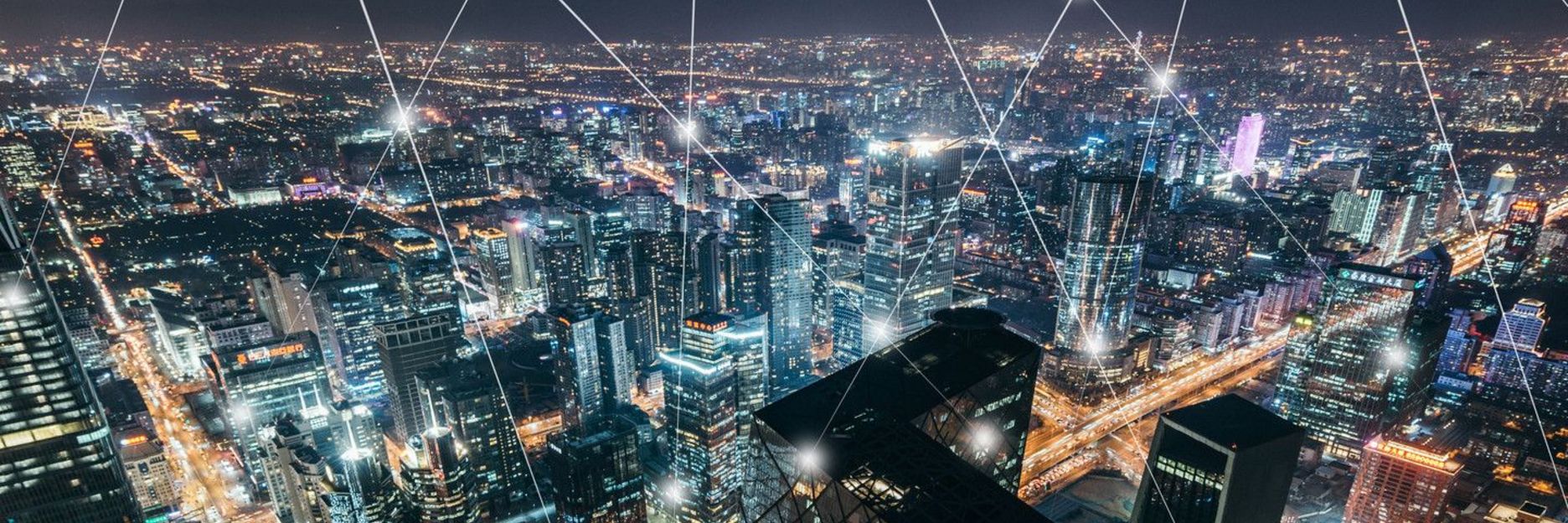The street lights at the Oranienburger Tor intersection turn on just before the last glimmer of daylight disappears beyond the horizon. By switching to energy-saving white light LEDs, the city council has reduced the power it uses for street lighting by 50 percent. And it has saved another 30 percent by taking an intelligent and proactive approach to when the lights are used. Every street light is also equipped with sensors and cameras. Taken together, these make up a physical network that stretches across Berlin. That’s what the future might look like in Berlin – and the potential benefits are clear.
Imagine, for example, how it could simplify the hunt for a parking space near the German Parliament building. An autonomous electric car cruises down the street, and its on-board computer receives the information that all the nearby parking lots are full. In response, it continues down a further two streets and parks in an investment banker’s private parking space. The banker is currently on a business trip in London and has made his space available to the city’s new parking management system. The on-board computer also receives a warning of heavy traffic on Strasse des 17. Juni, so it re-routes the vehicle down Spreeweg and Paulusstrasse – a slightly longer, but faster route. In this future vision, autonomous driving has created thousands of jobs in Berlin. The global market for the photonics industry alone is somewhere in the region of 10 billion euros, and all this helps maintain a high standard of living for the city’s inhabitants.
1.3 billion years ago ...
At the same time in this futuristic Berlin, researchers and scientists at the university are using laser light and high-precision space telescopes to discover how a collision between two black holes 1.3 billion years ago is still warping and distorting space-time. Meanwhile, medical professionals on the other side of town are unraveling some of the final mysteries of cancer. Using light-based fluorescence microscopes, they are able to observe the processes taking place in living cells without damaging them. They understand the processes and are able to find paths to a cure. In the operating room two floors down, surgeons performing an endoscopic procedure activate a microscopically small camera, causing it to transmit images from inside the body along an optical fiber. The camera has a vanishingly small diameter of just 125 micrometers and was produced using femtosecond lasers in a 3D printing process. The miniature camera helps the surgeons make the right diagnosis.
The senses of machines
Meanwhile, just a few kilometers south of the city center, robots move freely and confidently around a production hall, even avoiding containers that have tipped over – but how do they do it? The answer lies in a new kind of camera system that gives the robots a form of ‘eyesight’ which enables them to interpret their environment. This system facilitates smooth collaboration between robots, people and machines. The robots use light technology to see and behave exactly like we do during the normal working day. But once the final part rolls off the belt at the end of the day, then the last LED in the production hall also goes out. The only question that would remain then is whether restrictions on working hours apply to robots, too…?





